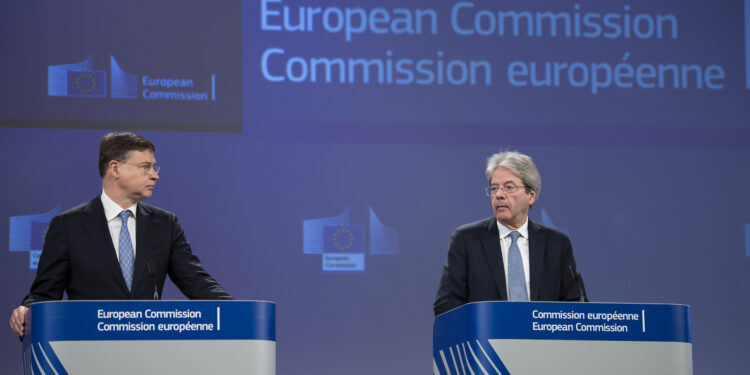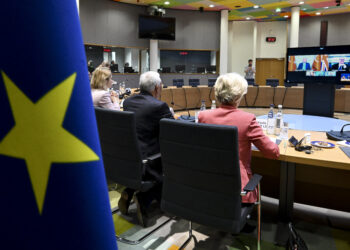Brussels – Three years after the entry into force of the Recovery Fund, the European Commission today (Feb. 21) took stock of the implementation of the Recovery and Resilience Facility (RRF), the core of the €800 billion ‘NextGenerationEU’ plan of loans and grants launched to counter the economic consequences of the pandemic.
Nearly 225 billion euros were paid, more than a thousand milestones achieved so far, over 28 million megawatt hours (MWh) of energy consumption saved, and a scenario of increasing the Union’s real GDP by up to 1.4 percent to 2026 compared to a scenario without the fund. These are the numbers pitted in the European Commission’s assessment and presented at a press conference by Vice President Valdis Dombrovskis and Economy Commissioner Paolo Gentiloni. The financial instrument – unique in that it has seen the European Commission go to the markets to issue joint debt on behalf of the 27 member states – was established in February 2021 and has the twin goals of helping member states recover from the COVID-19 pandemic and making this recovery greener, more digital, and more resilient.
The Recovery Facility has “a little under three years to run and, in many ways, the second half of its life will be more challenging than the first, as investments reach a critical stage in their implementation,” Gentiloni warned, speaking at a press conference about the need to continue to make a “success” of the unique growth opportunity provided by the Recovery. Brussels points out that unlike in previous crises, public investment in Europe increased during the Covid-19 pandemic and subsequent energy crisis, from 3 percent in 2019 to about 3.3 percent in 2023. Brussels forecasts further that Next Generation has the potential to increase real EU real GDP by up to 1.4 percent in 2026, compared to a scenario without a recovery plan. Even though the results “do not include the beneficial effects of the many reforms that are being enacted through the RRF.” As for public investment, in 2024, according to the Commission, it is expected to reach 3.4 percent of GDP, while in 2025, the EU’s public investment rate is expected to rise to 3.5 percent of GDP from 3.0 percent in 2019, and that half of this increase is related to RRF money. “Three years into its existence, NextGenerationEU continues to support our economic recovery and drives positive change across the EU. We have seen funding for energy efficiency, renewable energy, and digitalization projects like never before,” said European Commission President Ursula von der Leyen. “Our plan has supported young people to gain the skillsets they need and helped scale up our net-zero industry. With a unique combination of reforms and investments, NextGenerationEU is tackling national challenges and fast-tracking our common priorities for a green, inclusive, digital, resilient, and competitive EU.”
English version by the Translation Service of Withub




![[foto: imagoeconomica, rielaborazione Eunews]](https://www.eunews.it/wp-content/uploads/2025/03/trump-criptovalute-350x250.png)




